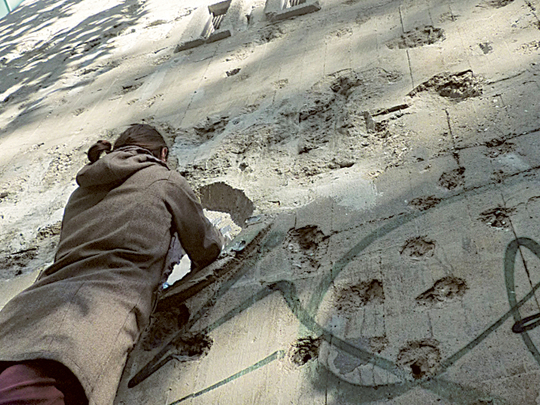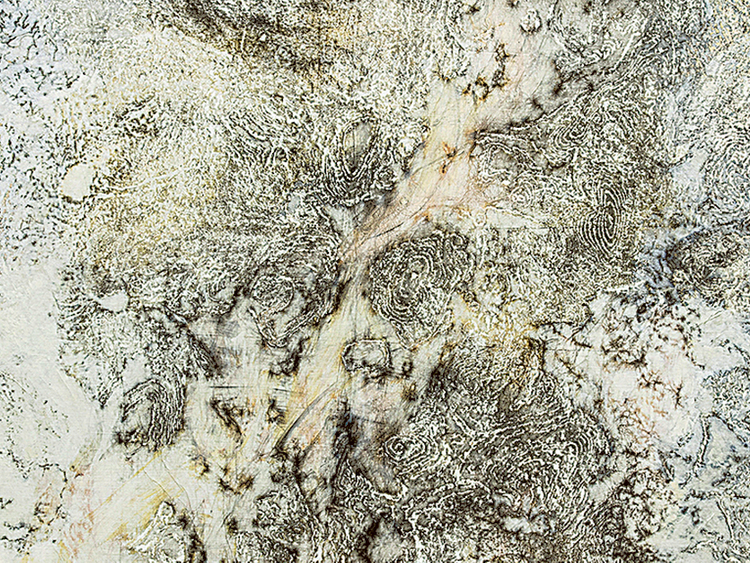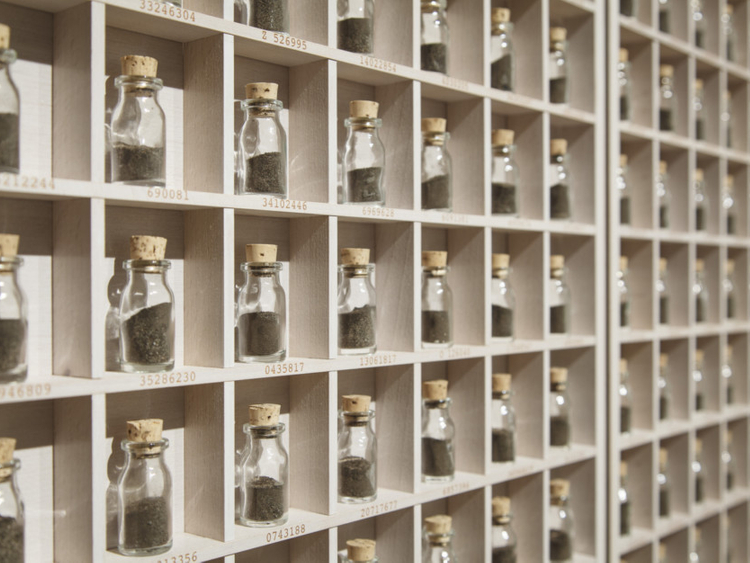
Berlin-based Russian-Tunisian artist Nadia Kaabi-Linke’s work is rooted in history, but it comments on contemporary issues. Her second solo exhibition in Dubai, “Fahrenheit 311: Seven Legends of Machismo” features eight artworks that illustrate the diversity of her practice.
“Fahrenheit 311” refers to the melting point of testosterone, the hormone associated with “manly” characteristics and behaviour patterns. The artist chose this title because, despite being quite different in concept, media, materials and techniques used, all the works in the show are linked by the fact that they address myths about masculinity and macho culture.
The works deal with themes of war and heroism, destruction of the environment, elitism, gambling, ignorance and domestic violence, linking them to the seven deadly sins, and asking questions about the global meltdown caused by society’s mistaken perceptions about machismo.
“Activities that pollute the environment, war mongering, manipulating financial systems for personal greed, and exploitation of women — these are signs of weakness and should be criticised; but in our patriarchal society, where machismo is celebrated, these things are perceived as strengths. My works are all related to the consequences of this misplaced sense of masculine pride,” Kaabi-Linke says.
The centrepiece of the exhibition is a recent work titled “The Altarpiece”. The work is designed like a religious triptych with the back of the three panels gilded with 24 karat gold. On the three panels are prints the artist has taken of the bullet-ridden walls of a building in Berlin that has numerous historical associations. The work talks about the history of a real object as well as the object of history.
“This building was originally a bunker of the German Reich Railway, built by forced labour to shelter civilians during the Second World War. During the Cold War, it was used as a textile warehouse by the Red Army. Later it was a ‘banana bunker’ for storing fruit and then a venue for techno parties and art exhibitions. Today, it has been restructured and holds artworks of the Boros Collection. When the panels are folded, all you see is a golden square, resembling the logo of a German bank, which represents stability and prosperity.
“The image of a wall, clearly showing traces of destruction, is specifically related to the history of Berlin, but the work talks about the history of the world. It alludes to how, when we do not like a part of history, we close our eyes, or try to cover it up with golden doors. But the fact is that our present is linked to our past and it is important to look honestly at our past rather than ignoring it or trying to touch it up,” the artist says.
This work, Kaabi-Linke adds, links the wounds inflicted on buildings during war to the stigmata of Christ, appropriating the role of altarpieces in narrating the history of Christianity, to narrate the history of Germany and Europe. “The altarpiece is thus a metaphor for the eternal conservation of vanishing historical traces, and cultural and political strategies to cover up the past.”
The artist has used different materials and methods to talk about war and the way we preserve memories of the past in “Tunisian American”. The work is a wall installation featuring 400 flacons (glass bottles in which kohl is sold in Tunisia) filled with soil and neatly arranged on wooden shelves.
“These flacons contain soil from the graves of American soldiers who died in North Africa during the Second World War. They highlight the fact that these soldiers died far away from home fighting a war in a country that had nothing to do with the war; and that ‘memorials’ to fallen ‘heroes’ lie forgotten in various places around the world,” the artist says.
In “Impunities London Originals”, Kaabi-Linke looks at the manifestation of machismo in the form of domestic violence. “During a residency in London in 2012, I interacted with several victims of domestic violence and they allowed me to take prints of the wounds on their bodies. This work is about violence which is hidden by the silence around it. This is a global problem, and I used forensic techniques to take the prints to highlight the lack of official investigations in such cases. I have used laser to engrave on glass the scars and words from my conversations with these women. The words represent the invisible psychological scars that can hurt even more than physical ones; and I used engraving, which is a technique used for making trophies, which represent something society is proud of, to show something that it should be ashamed of,” the artist says.
In three related works, the artist has carefully filled the bubbles in sheets of bubble wrap with materials such as cement, Tunisian sand and pollen grains that explode under pressure. The work speaks about the weak, but seemingly strong financial bubble; about the erosion of North African shores caused by unregulated sand mining by the construction industry; about war and the profits made from selling weapons that take many innocent lives; and about sexual dominance and the pressures of modern life.
Other works in the exhibition include “A Short History of Salt and Sun”, featuring wall prints signifying the decay and failure of the Tunisian tourism industry; and a series of drawings of the financial district in London that comment on the opacity of the institutions housed in transparent glass buildings; and the multiple constructs of reality based on diverse individual perspectives.
Jyoti Kalsi is an arts enthusiast based in Dubai.
“Fahrenheit 311: Seven Legends of Machismo” will run at Lawrie Shabibi gallery, Al Quoz until May 14.














